A small sample of the many new history book titles arriving at the library soon
Beirut Rules: The Murder of a CIA Station Chief and Hezbollah’s War Against America. By Fred Burton.
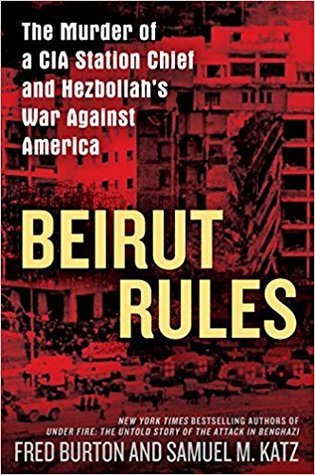 On April 18th, 1983, a van rigged with 2,000 pounds of heavy explosives broke through the security perimeter of the American embassy in Lebanon and exploded, killing sixty-three people and decimating intelligence operations throughout the Middle East.
On April 18th, 1983, a van rigged with 2,000 pounds of heavy explosives broke through the security perimeter of the American embassy in Lebanon and exploded, killing sixty-three people and decimating intelligence operations throughout the Middle East.
Only one man inside the CIA possessed the courage and skills to rebuild the networks destroyed in the blast: William Buckley. Assigned as the new Beirut station chief, Buckley arrived to a war-torn city and a CIA station in tatters. A field operative at heart, he delved into Beirut’s darkest corners, developing new sources and handling assets.
Then, on October 23rd, a US Marine Corps barracks was destroyed in a plot masterminded by a young terrorist named Imad Mughniyeh. But even as President Reagan vowed revenge, Mughniyeh eyed a new target: Buckley.
Beirut Rules is the pulse-by-pulse account of Buckley’s abduction, torture, and murder at the hands of Hezbollah terrorists. Drawing on never seen before U.S. government documents, as well as interviews with Buckley’s former coworkers, friends and family, Burton and Katz reveal how the pursuit to find Buckley in the wake of his kidnapping ignited a war against terror that continues to shape the Middle East to this day.
They Said No to Nixon: Republicans Who Stood Up to the President’s Abuse of Power. By Michael Koncewicz.
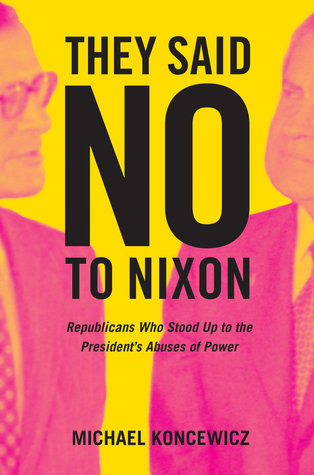 In more than three thousand recorded conversations, the Nixon tapes famously exposed a president’s sinister views of governance that would eventually lead to his downfall. Despite Richard Nixon’s best efforts, his vision of a government where he could use his power to punish his political enemies never came to fruition because members of his own party defied his directives. While many are familiar with the Republicans who turned against Nixon during the final stages of the Watergate saga, They Said No to Nixon uncovers for the first time those within the administration—including Nixon’s own appointees—who opposed the White House early on, quietly blocking the president’s attacks on the IRS, the Justice Department, and other sectors of the federal government.
In more than three thousand recorded conversations, the Nixon tapes famously exposed a president’s sinister views of governance that would eventually lead to his downfall. Despite Richard Nixon’s best efforts, his vision of a government where he could use his power to punish his political enemies never came to fruition because members of his own party defied his directives. While many are familiar with the Republicans who turned against Nixon during the final stages of the Watergate saga, They Said No to Nixon uncovers for the first time those within the administration—including Nixon’s own appointees—who opposed the White House early on, quietly blocking the president’s attacks on the IRS, the Justice Department, and other sectors of the federal government.
Culling from previously unpublished excerpts from the tapes and recently released materials that expose the thirty-seventh president’s uncensored views, Michael Koncewicz reveals how Republican party members remained loyal civil servants in the face of Nixon’s attempts to expand the imperial presidency.
Delving into the abuses of power surrounding the Watergate era and showing how they were curbed, They Said No to Nixon sheds light on the significant cultural and ideological shifts that occurred within the GOP during the pivotal 1970s. Koncewicz deftly demonstrates how Nixon’s administration marked a decisive moment that led to the rise of modern conservatism and today’s ruthlessly partisan politics.
King and the Catholics: England, Ireland and the Fight for Religious Freedom 1780-1829. By Antonia Fraser.
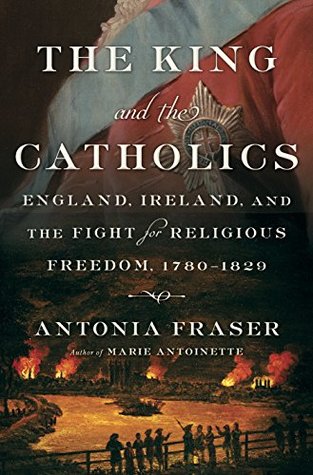 In the summer of 1780, mob violence swept through London. Nearly one thousand people were killed, looting was widespread, and torch-bearing protestors marched on the Prime Minister’s residence at 10 Downing Street. These were the Gordon Riots: the worst civil disturbance in British history, triggered by an act of Parliament designed to loosen two centuries of systemic oppression of Catholics in the British Isles. While many London Catholics saw their homes ransacked and chapels desecrated, the riots marked a crucial turning point in their fight to return to public life.
In the summer of 1780, mob violence swept through London. Nearly one thousand people were killed, looting was widespread, and torch-bearing protestors marched on the Prime Minister’s residence at 10 Downing Street. These were the Gordon Riots: the worst civil disturbance in British history, triggered by an act of Parliament designed to loosen two centuries of systemic oppression of Catholics in the British Isles. While many London Catholics saw their homes ransacked and chapels desecrated, the riots marked a crucial turning point in their fight to return to public life.
Over the next fifty years, factions battled one another to reform the laws of the land: wealthy English Catholics yearned to rejoin the political elite; the protestant aristocracy in Ireland feared an empowered Catholic populace; and the priesthood coveted old authority that royal decree had forbidden. Kings George III and George IV stubbornly refused to address the “Catholic Question” even when pressed by their prime ministers–governments fell over it–and events in America and Europe made many skeptical of disrupting the social order. But in 1829, through the dogged work of charismatic Irish lawyer Daniel O’Connell and with the support of the Duke of Wellington, the Roman Catholic Relief Act finally passed. It was a watershed moment, opening the door to future social reform and the radical transformation of the Victorian age.
The King and the Catholics is a gripping, character-driven example of narrative history at its best. It is also a distant mirror of our own times, reflecting the dire consequences of state-sanctioned intolerance and showing how collective action and the political process can triumph over wrongheaded legislation.
Inhuman Land: Searching for the Truth in Soviet Russia, 1941-1942. By Jozef Czapski.
 In 1941, when Germany turned against the USSR, tens of thousands of Poles—men, women, and children who were starving, sickly, and impoverished—were released from Soviet prison camps and allowed to join the Polish army being formed in the south of Russia. One of the survivors who made the difficult winter journey was the painter and reserve officer Józef Czapski.
In 1941, when Germany turned against the USSR, tens of thousands of Poles—men, women, and children who were starving, sickly, and impoverished—were released from Soviet prison camps and allowed to join the Polish army being formed in the south of Russia. One of the survivors who made the difficult winter journey was the painter and reserve officer Józef Czapski.
General Anders, the army’s commander in chief, assigned Czapski the task of receiving the Poles arriving for military training; gathering accounts of what their fates had been; organizing education, culture, and news for the soldiers; and, most important, investigating the disappearance of thousands of missing Polish officers. Blocked at every level by the Soviet authorities, Czapski was unaware that in April 1940 the officers had been shot dead in the Katyn forest, a crime for which Soviet Russia never accepted responsibility.
Czapski’s account of the years following his release from the camp, the formation of the Polish army, and its arduous trek through Central Asia and the Middle East to fight on the Italian front is rich in anecdotes about the suffering of the Poles in the USSR, quotations from the Polish poetry that sustained him and his companions, encounters with literary gures (including Anna Akhmatova), and philosophical thoughts about the relationships between nationalities.
When Women Ruled The World: Six Queens of Egypt. By Kara Cooney.
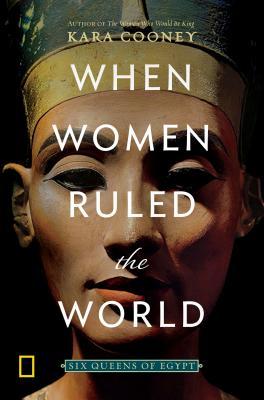 Female rulers are a rare phenomenon–but thousands of years ago in ancient Egypt, women reigned supreme. Regularly, repeatedly, and with impunity, queens like Hatshepsut, Nefertiti, and Cleopatra controlled the totalitarian state as power-brokers and rulers. But throughout human history, women in positions of power were more often used as political pawns in a male-dominated society. What was so special about ancient Egypt that provided women this kind of access to the highest political office? What was it about these women that allowed them to transcend patriarchal obstacles? What did Egypt gain from its liberal reliance on female leadership, and could today’s world learn from its example?
Female rulers are a rare phenomenon–but thousands of years ago in ancient Egypt, women reigned supreme. Regularly, repeatedly, and with impunity, queens like Hatshepsut, Nefertiti, and Cleopatra controlled the totalitarian state as power-brokers and rulers. But throughout human history, women in positions of power were more often used as political pawns in a male-dominated society. What was so special about ancient Egypt that provided women this kind of access to the highest political office? What was it about these women that allowed them to transcend patriarchal obstacles? What did Egypt gain from its liberal reliance on female leadership, and could today’s world learn from its example?
Celebrated Egyptologist Kara Cooney delivers a fascinating tale of female power, exploring the reasons why it has seldom been allowed through the ages, and why we should care.
Ravenmaster: My Life with the Ravens at the Tower of London. By Christopher Skaife.
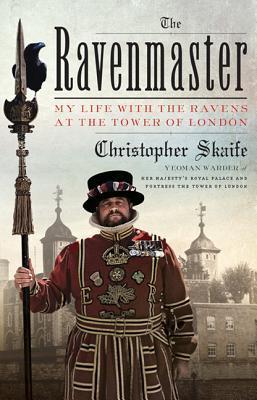 The ravens at the Tower of London are of mighty importance: rumor has it that if a raven from the Tower should ever leave, the city will fall.
The ravens at the Tower of London are of mighty importance: rumor has it that if a raven from the Tower should ever leave, the city will fall.
The title of Ravenmaster, therefore, is a serious title indeed, and after decades of serving the Queen, Yeoman Warder Christopher Skaife took on the added responsibility of caring for the infamous ravens. In The Ravenmaster, he lets us in on his life as he feeds his birds raw meat and biscuits soaked in blood, buys their food at Smithfield Market, and ensures that these unusual, misunderstood, and utterly brilliant corvids are healthy, happy, and ready to captivate the four million tourists who flock to the Tower every year.
A rewarding, intimate, and inspiring partnership has developed between the ravens and their charismatic and charming human, the Ravenmaster, who shares the folklore, history, and superstitions surrounding the ravens and the Tower. Shining a light on the behavior of the birds, their pecking order and social structure, and the tricks they play on us, Skaife shows who the Tower’s true guardians really are―and the result is a compelling and irreverent narrative that will surprise and enchant.
